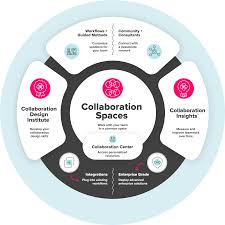The Role of Affirmative Action in Promoting Equality and Diversity
Affirmative action is a policy designed to promote equal opportunities for individuals from historically marginalized groups, such as racial minorities, women, and individuals with disabilities. The goal of affirmative action is to address past and present discrimination by actively seeking to increase the representation of these groups in education, employment, and other areas.
One of the key arguments in favor of affirmative action is that it helps to create a more diverse and inclusive society. By providing opportunities to individuals who may have been disadvantaged due to their race, gender, or other characteristics, affirmative action can help break down barriers and promote a more equitable society.
Opponents of affirmative action argue that it can lead to reverse discrimination and undermine merit-based principles. However, supporters contend that affirmative action is necessary to level the playing field and ensure that all individuals have an equal chance to succeed.
Affirmative action has been a subject of debate and controversy for decades, with ongoing discussions about its effectiveness and implications. While there are differing opinions on the issue, one thing is clear: affirmative action plays a crucial role in advancing equality and diversity in our society.
Ultimately, the goal of affirmative action is not just to provide opportunities for individuals from underrepresented groups but also to create a more inclusive society where everyone has an equal chance to thrive. By promoting diversity and addressing systemic inequalities, affirmative action helps move us closer to a more just and equitable world for all.
Understanding Affirmative Action: Key Questions and Answers
- What is affirmative action?
- How does affirmative action work?
- Who benefits from affirmative action?
- Is affirmative action still necessary today?
- Does affirmative action lead to reverse discrimination?
- What are the arguments for and against affirmative action?
- What laws govern affirmative action in the United States?
- How has affirmative action evolved over time?
What is affirmative action?
Affirmative action is a policy designed to promote equal opportunities for individuals from historically marginalized groups, such as racial minorities, women, and individuals with disabilities. It involves taking proactive steps to address past and present discrimination by actively seeking to increase the representation of these groups in education, employment, and other areas. The goal of affirmative action is to create a more diverse and inclusive society by providing opportunities to those who may have been disadvantaged due to their race, gender, or other characteristics. While affirmative action has been a subject of debate and controversy, its fundamental aim is to level the playing field and ensure that all individuals have an equal chance to succeed.
How does affirmative action work?
Affirmative action operates by implementing policies and practices that aim to promote equal opportunities for individuals from historically marginalized groups. This may involve measures such as setting goals for the representation of underrepresented groups in education, employment, and other areas, as well as implementing outreach programs to attract diverse candidates. By actively seeking to address past and present discrimination, affirmative action seeks to level the playing field and create a more inclusive society where individuals from all backgrounds have an equal chance to succeed.
Who benefits from affirmative action?
Affirmative action benefits individuals from historically marginalized groups, including racial minorities, women, individuals with disabilities, and other underrepresented populations. By providing opportunities for these individuals to access education, employment, and other areas where they may have faced discrimination in the past, affirmative action aims to level the playing field and promote greater equality. The policy helps address systemic inequalities and create a more diverse and inclusive society by ensuring that all individuals have a fair chance to succeed regardless of their background or identity.
Is affirmative action still necessary today?
The question of whether affirmative action is still necessary today is a complex and contentious issue. Proponents argue that affirmative action remains essential in addressing systemic inequalities and promoting diversity in education, employment, and other areas. They point to persistent disparities faced by marginalized groups and argue that affirmative action is a crucial tool for leveling the playing field. On the other hand, opponents argue that affirmative action can lead to reverse discrimination and may not always achieve its intended goals. The debate over the necessity of affirmative action continues to spark discussions about equality, meritocracy, and the best ways to promote a fair and inclusive society in the present day.
Does affirmative action lead to reverse discrimination?
The question of whether affirmative action leads to reverse discrimination is a complex and contentious issue. Opponents of affirmative action argue that by giving preferential treatment to individuals from underrepresented groups, it may disadvantage those who do not fall into these categories. They contend that this can lead to a form of discrimination against individuals who are not considered minorities. However, supporters of affirmative action assert that the policy is necessary to address systemic inequalities and promote diversity in education and employment. They argue that the goal of affirmative action is not to discriminate against any group but rather to level the playing field and create opportunities for historically marginalized individuals. The debate over whether affirmative action results in reverse discrimination continues to be a point of contention, highlighting the ongoing complexities surrounding this issue.
What are the arguments for and against affirmative action?
The debate surrounding affirmative action revolves around a complex array of arguments both for and against its implementation. Proponents argue that affirmative action is essential for addressing historical injustices, promoting diversity, and leveling the playing field for marginalized groups. They believe that without affirmative action, systemic inequalities would persist, hindering opportunities for individuals who have faced discrimination based on their race, gender, or other characteristics. On the other hand, opponents of affirmative action contend that it can lead to reverse discrimination, undermine merit-based selection processes, and perpetuate divisions based on identity rather than qualifications. The ongoing discourse on affirmative action underscores the nuanced considerations involved in balancing the pursuit of equality with concerns about fairness and meritocracy in society.
What laws govern affirmative action in the United States?
In the United States, affirmative action is primarily governed by a set of laws and regulations that aim to promote equal opportunities and combat discrimination in various sectors, such as education, employment, and government contracting. Key laws that influence affirmative action policies include Title VII of the Civil Rights Act of 1964, which prohibits employment discrimination based on race, color, religion, sex, or national origin; Executive Order 11246, which requires federal contractors to take affirmative action to ensure equal employment opportunities; and the Equal Protection Clause of the Fourteenth Amendment to the U.S. Constitution, which mandates equal protection under the law. These laws form the legal framework for affirmative action programs in the United States and guide efforts to create a more inclusive and equitable society.
How has affirmative action evolved over time?
Affirmative action has evolved significantly over time in response to changing social and legal landscapes. Initially introduced in the 1960s to address systemic discrimination and promote equal opportunities for marginalized groups, affirmative action policies have undergone various revisions and reinterpretations. Over the years, court decisions and legislative changes have shaped the scope and implementation of affirmative action programs in education, employment, and other sectors. While the core principle of promoting diversity and addressing inequality remains central to affirmative action, debates continue on the effectiveness and fairness of these policies in achieving their intended goals. The evolution of affirmative action reflects ongoing efforts to navigate complex issues of equity, diversity, and inclusion in society.




Leave a Reply